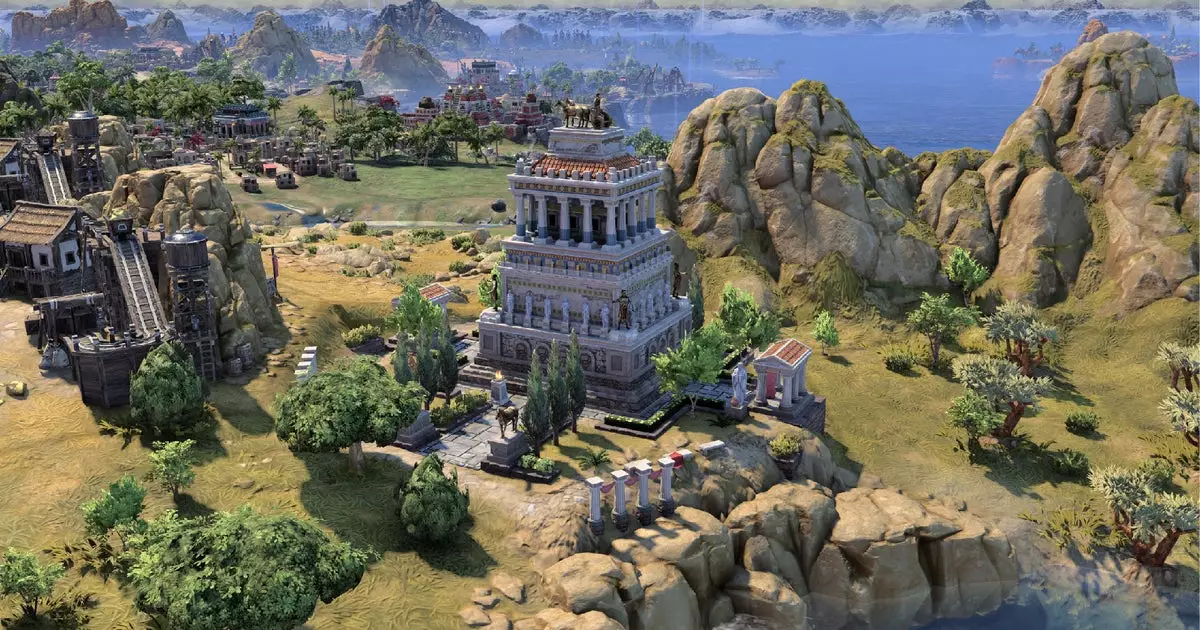In the ever-evolving landscape of complex strategy games, few developments demonstrate the delicate balance between innovation and stability more vividly than Firaxis’s recent update to Civilization. The launch of patch 1.2.4 signifies more than just incremental fixes; it represents an ambitious attempt to overhaul the game’s underlying architecture by shifting to a new UI system. While such a move promises a more reactive and scalable interface, it simultaneously exposes a game to turbulence, particularly impacting mods—a vital aspect of the game’s community-driven charm.
This backend overhaul was necessary for future growth, yet it caused widespread disruption, especially for modders. By renaming and bundling files differently, the update inadvertently severed many mod dependencies, leading the community’s creativity to grind to a halt temporarily. Firaxis’s transparent explanation around this disruption underscores their recognition that ambitious, foundational changes are inherently risky. Their decision to allow players to revert to a “legacy” branch reflects a thoughtful acknowledgment that stability remains crucial for those who customize, mod, and deeply engage with the game. It’s a reminder that innovation should prioritize players’ experience, and the developers’ willingness to provide rollback options signals a healthy respect for their community’s needs.
Furthermore, this high-stakes restructuring lays the groundwork for long-term improvements. Firaxis’s promise of a more refined UI in upcoming updates indicates a commitment to balancing behind-the-scenes progress with user experience. This approach shows a maturity in development strategy, where patience and transparency are prioritized over rushed fixes, thus fostering a more resilient ecosystem.
Strategic and Artistic Enhancements: Tweaks that Elevate Gameplay
Beyond the backend, Civ 7’s latest patch is also a testament to thoughtful game balancing and artistic refinement. Wonder placement, a core element of strategic planning, has received noticeable updates. Erdene Zuu, a wonder with cultural significance, can now be built earlier, encouraging players to integrate culture early in their campaigns. The reallocation of the Colossus and Monks Mound to different civic branches offers nuanced choices, prompting players to reconsider their civic strategies—an essential layer of depth in a game defined by its strategic multiplicity.
Aesthetically, the game has expanded the versatility of certain wonders—pyramids can now occupy locations outside sandy terrains—broadening the scope for creative city planning. However, some restrictions remain, such as the banning of mummy buildings from snowy tundras, preserving immersion and thematic consistency. These adjustments reflect a thoughtful balance: offering more options for artistic expression while maintaining the game’s historical integrity. The nerfs to influential wonders like the Gate of All Nations and House of Wisdom suggest a desire to prevent overpowered strategies that could undermine game fairness, thus promoting a more skill-based victory path.
The updates to age transitions and influence mechanics reveal an intriguing intent to deepen strategic continuity. Alliances and accrued wealth now persist through age changes, rewarding long-term planning and fostering more meaningful diplomatic relationships. It hints at a future where flexibility and persistence matter more than ever—an approach that resonates with seasoned players seeking layered and enduring tactical play.
AI and Interface: Making the Game Smarter and More Accessible
Enhancing AI behavior might seem secondary compared to cosmetic or balance tweaks, but it arguably has the most profound impact on long-term engagement. Firaxis’s efforts to strengthen AI opponents—making them less erratic and smarter in their decision-making—address a common critique of 4X games: that the AI is sometimes too predictable or easily manipulated. By reducing absurd or illogical moves, the AI feels more like a genuine opponent, raising the stakes and challenge level. This adjustment is crucial for maintaining player interest, especially during late-game scenarios where AI missteps could otherwise diminish immersion.
The interface improvements—likely driven by the new UI framework—are no less vital. A more reactive and intuitive interface reduces cognitive load, allowing players to focus on strategic depth rather than grappling with clunky menus or unresponsive commands. While these are behind-the-scenes upgrades, their impact manifests directly in how players perceive and enjoy the game, making the gameplay experience more fluid and satisfying.
In essence, Firaxis’s latest update reflects a broader philosophical shift: the recognition that thriving game ecosystems require both technological sophistication and community responsiveness. It’s a careful dance—balancing innovation with tradition, challenge with accessibility, and stability with progress. This update, despite its rough patches, demonstrates a commitment to evolving Civ 7 into a richer, more resilient experience—one that invites players to think deeper, plan smarter, and enjoy the grand tapestry of human history with increasingly refined tools.


Leave a Reply